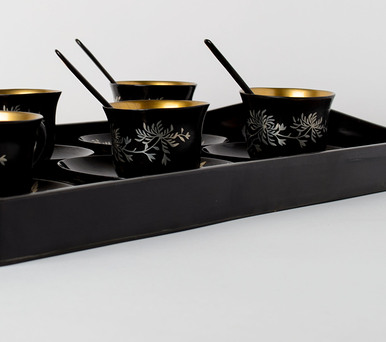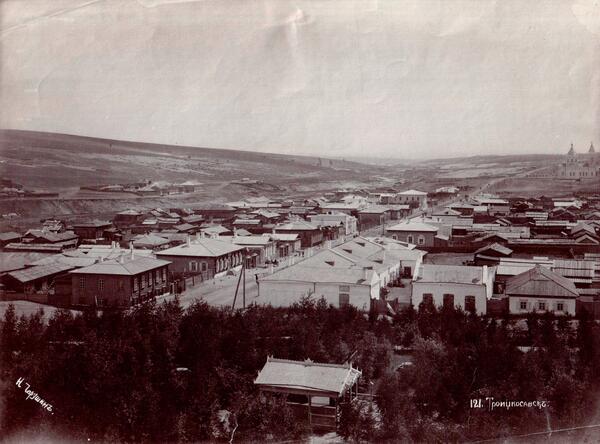The museum’s collection features 108 photographs by Nikolay Apollonovich Charushin. This one shows the Kyakhta trading settlement, looking southwest. The Cathedral of the Resurrection of Christ can be seen on the right.
Kyakhta was founded as a trading settlement near the Troitskosavsky Fortress by the order of Sava Vladislavich-Raguzinsky in 1728. The square-shaped fortification with a side of 213 meters consisted of a palisade and a moat, with quadrangular bastions at the corners.
Inside the fortress, there were 32 log houses, as well as a merchant center with 32 shops and warehouses. The settlement was constructed by 350 soldiers from the Tobolsk Regiment of Ivan Buchholz and 30 service class representatives from the Udinsky Fortress, with 25 carts and horses.
In three months, the workers were sent home, and new service people were hired in the Ilyinsky and Kabansky Fortresses. In 1729, Buchholz reported to the Collegium of Foreign Affairs that trade had been established with China. By 1730, the existing facilities no longer met the needs of trade, the merchant center was still not completed, and the houses were cramped and poorly organized.
In 1733, after the merchants complained to the Irkutsk vice-governor, 15 more log houses were built, and the merchant center was expanded. The settlement’s territory grew, and the number of bastions at the corners and in the center of the palisade was increased to eight.
In 1735, a grain barn and a wine cellar were constructed inside the fortress, as well as two taverns, a brewery, and bathhouses beyond its walls. Between 1736 and 1740, an annual average of 1,430 carts and 96 sleds of goods were brought to Kyakhta from Russia’s regions.
Kyakhta’s development was promoted by the Senate’s permission “everyone not subject to the poll tax” to settle there “except for runaway peasants and soldiers.” For several years, local residents also enjoyed a tax holiday and were not conscripted into the army. In 1809, the tsar ordered all the settlement’s residents, except for merchant wholesalers, to move to the Troitskosavsky Fortress.
The photographer Nikolay
Charushin recalled,



